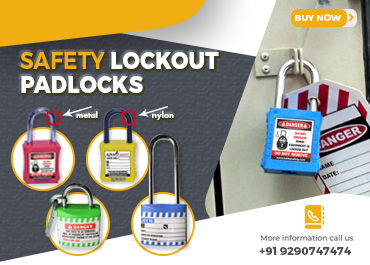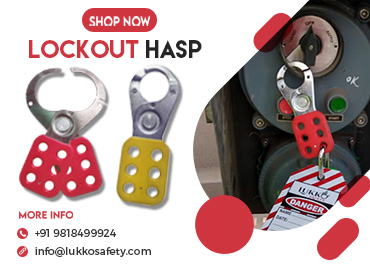Lockout Tagout Devices in India: Everything You Need to Know
In India, as in every other country, there are rules and regulations that business owners must follow in order to stay within the law.
What is Lockout/Tagout?
Lockout/Tagout (LOTO) is a simple safety process that prevents workers from being injured while they’re operating machinery. In a nutshell, LOTO involves using keys or cards to lock out a machine before working on it, and then tagging out when it has been completed. The reason for doing so is that without these steps, moving heavy machinery can result in fatal accidents.
What should I know before choosing equipment?
Finding lockout tagout devices online can be easy, but ensuring they’re legal to use can be tricky. If you live or work in India, it’s imperative that you do your research before buying equipment; otherwise, you may end up with a system that won’t work for your industry. Follow our guide for everything you need to know about ILO/Tagout devices and finding safe equipment for your job.
What are different types of lockout/tagout equipment?
When it comes to lockout/tagout equipment, there are actually a few different types of devices that can be used, depending on whether you are working with live or non-live electrical equipment. This is an important thing to note, because most lockout/tagout devices are designed for use with live electricity; if you aren’t sure what kind of equipment you will be working on (or how old your facility’s wiring is), it’s best to ask for guidance from your supervisor.
How do I choose the right brand?
When it comes to lockout and tagout devices, there are some common types of brand names and phrases that you’re likely to see. These aren’t explicitly trademarked by brands, but they give a very good indication of their quality. Here are five phrases you may see in relation to lockout devices, what they mean and how they can help you make an informed decision.
Where can I buy these products?
In general, LOTO devices are relatively affordable, making them an excellent solution for small businesses. Though you should always speak with a licensed professional about your specific needs, companies like Lukkosafety have a variety of options available for any budget and for various industries. To see all of Lukkosafety’s products, visit their website. From there, you can narrow down your search based on industry and price range.
Conclusion
Lock out tagout devices are a tool used for ensuring that equipment and machinery are in a state of zero risk. In order to ensure total safety, it’s crucial that you have these devices on hand, ready for use when you need them. Lukkosafety stocks all different kinds of lockout tagout devices so that you have a wide selection from which to choose. When shopping for lockout tagout devices, make sure you consider factors like price and weight so that your purchasing process is smooth.


